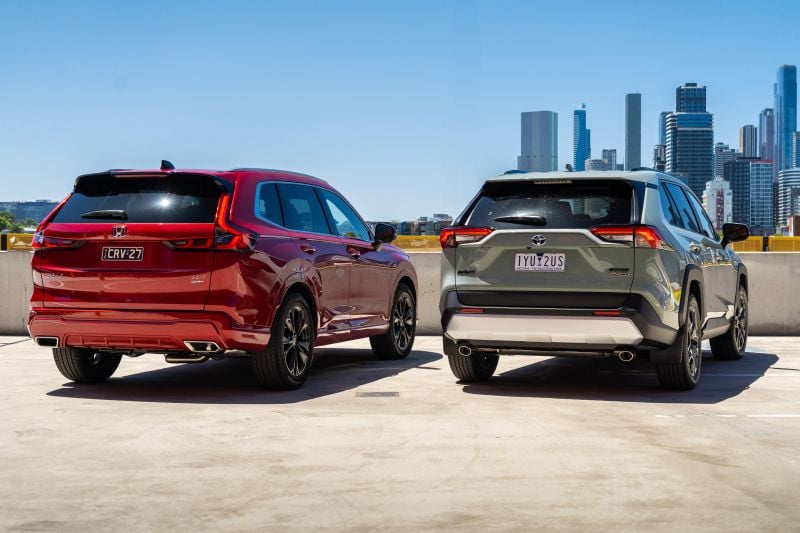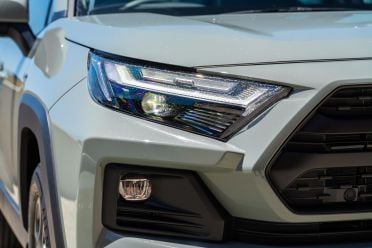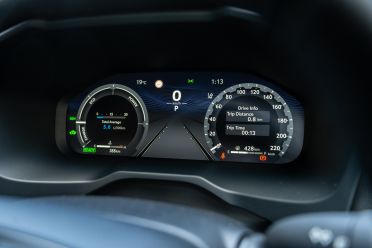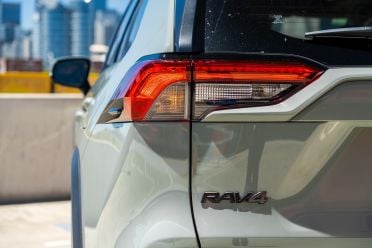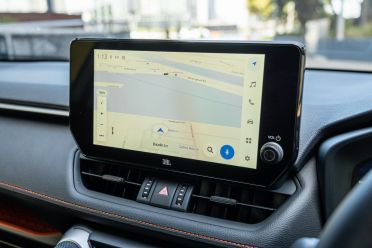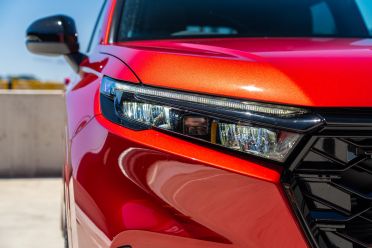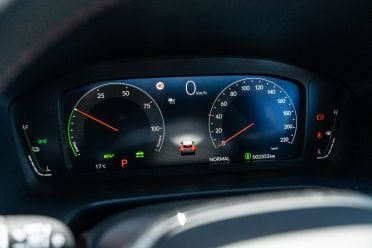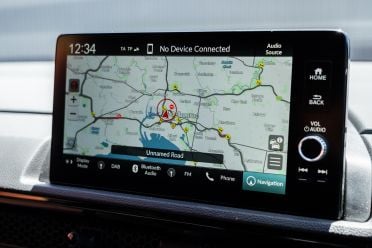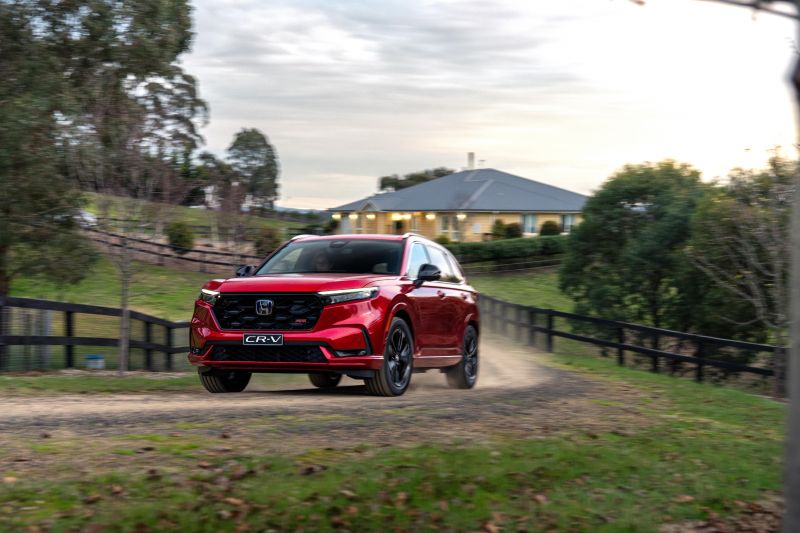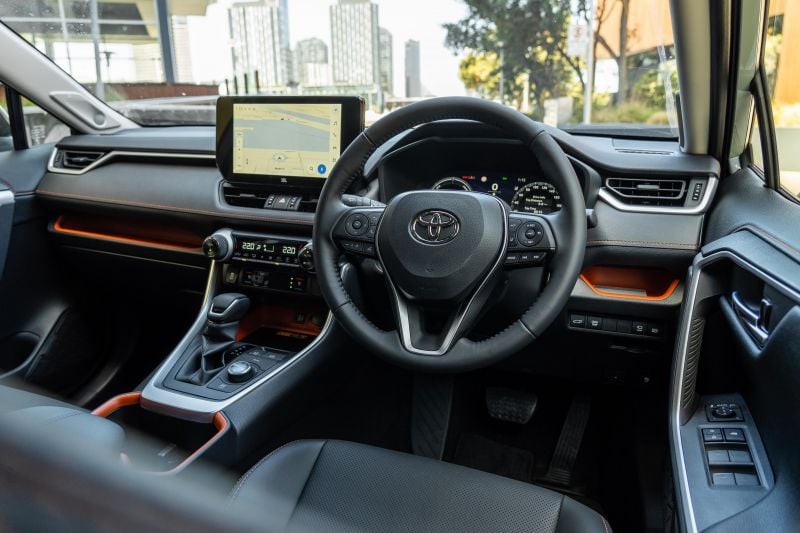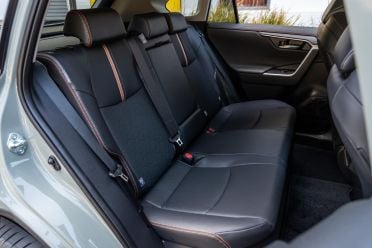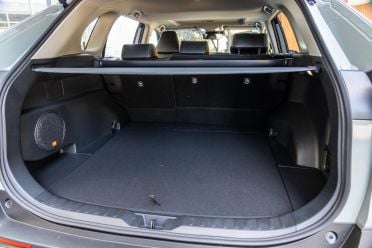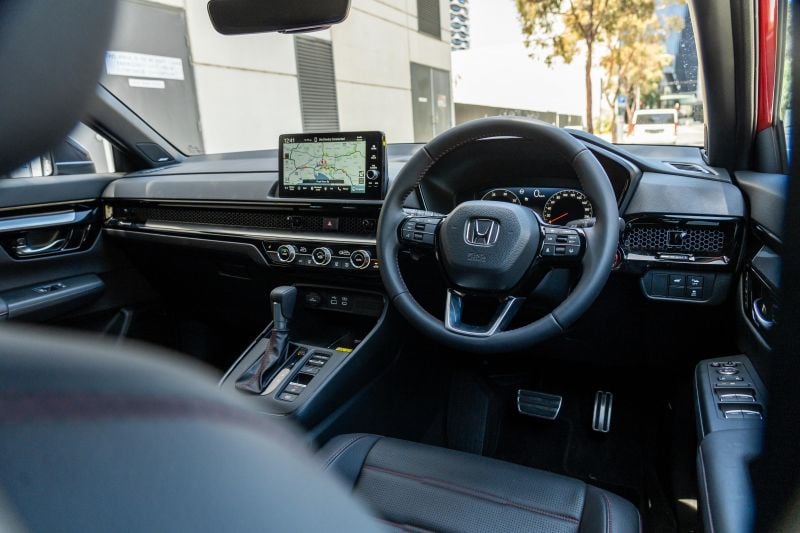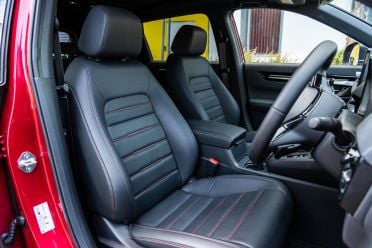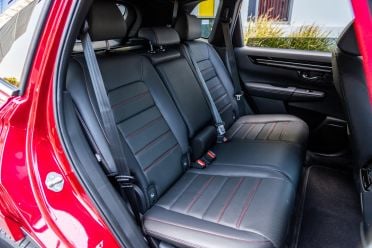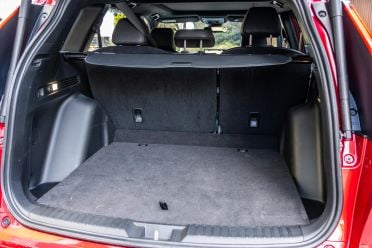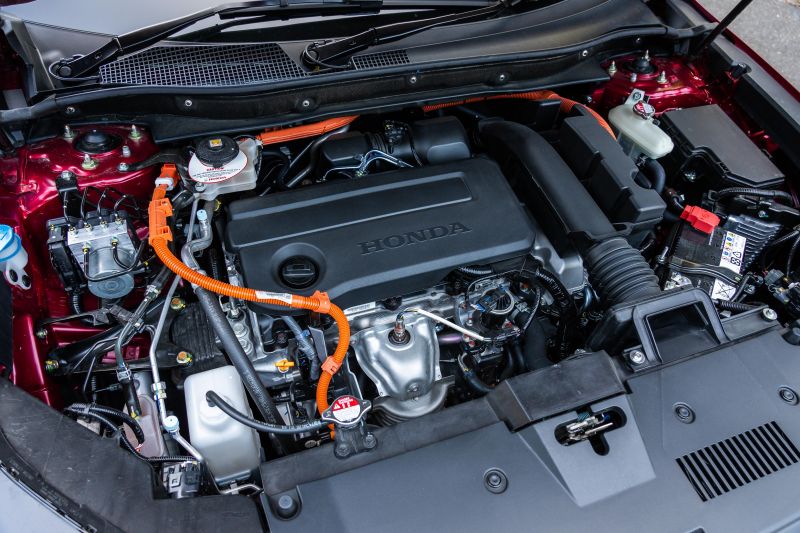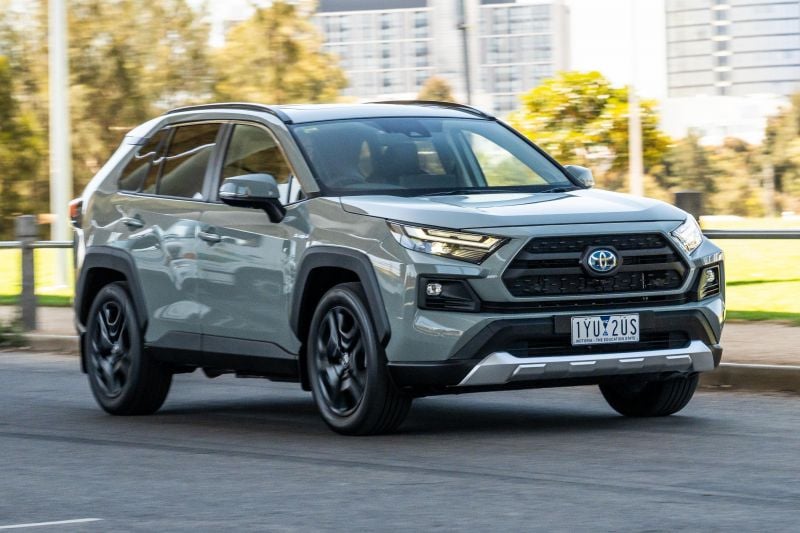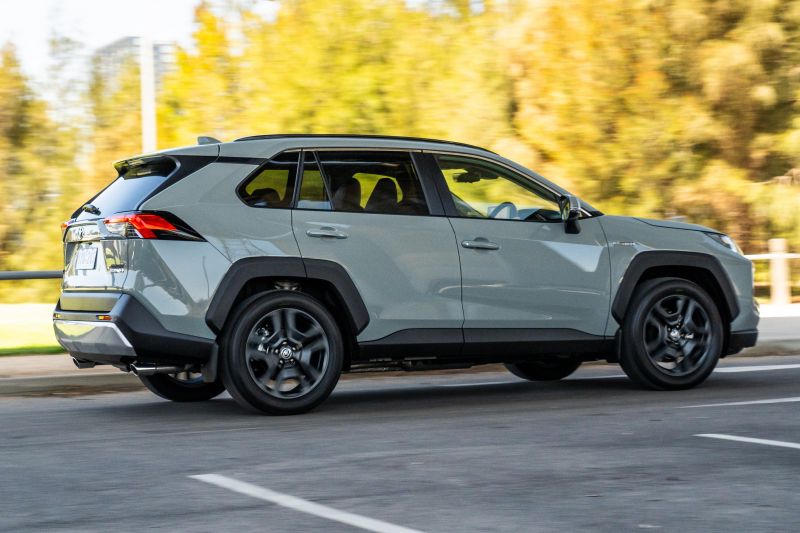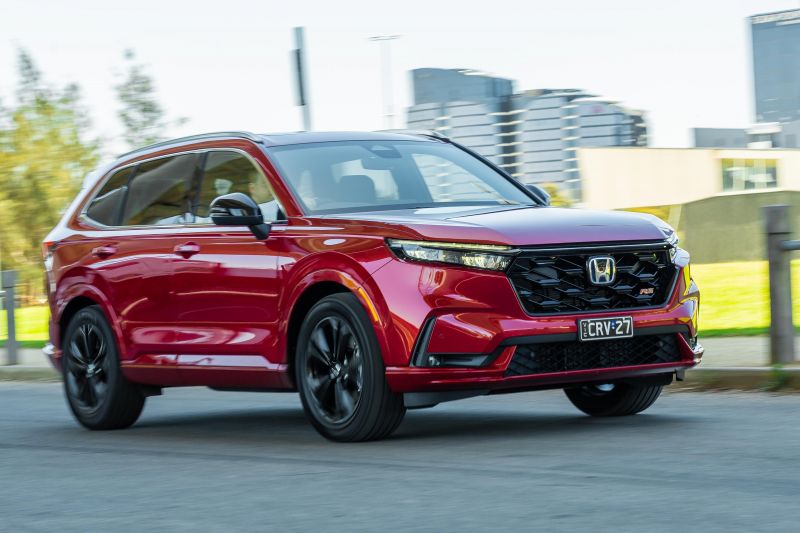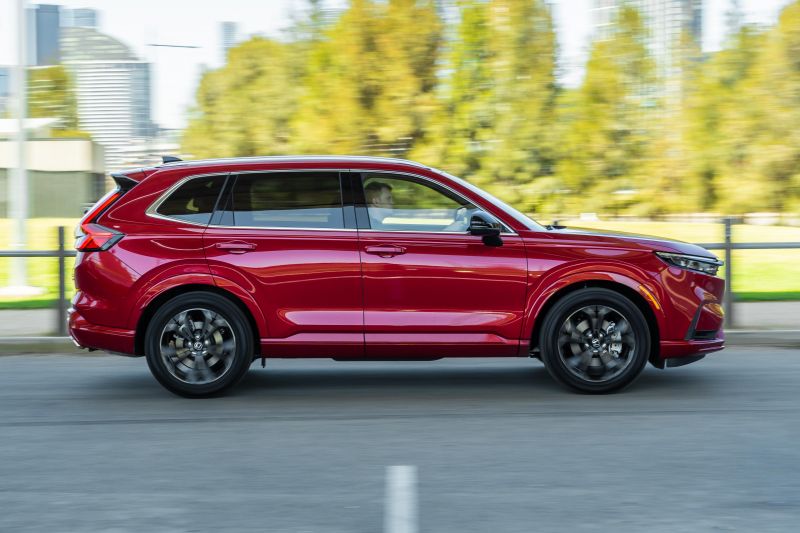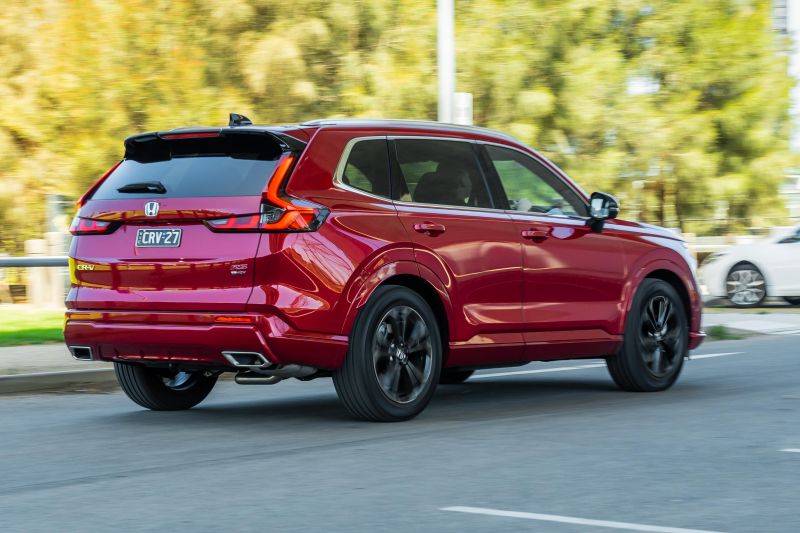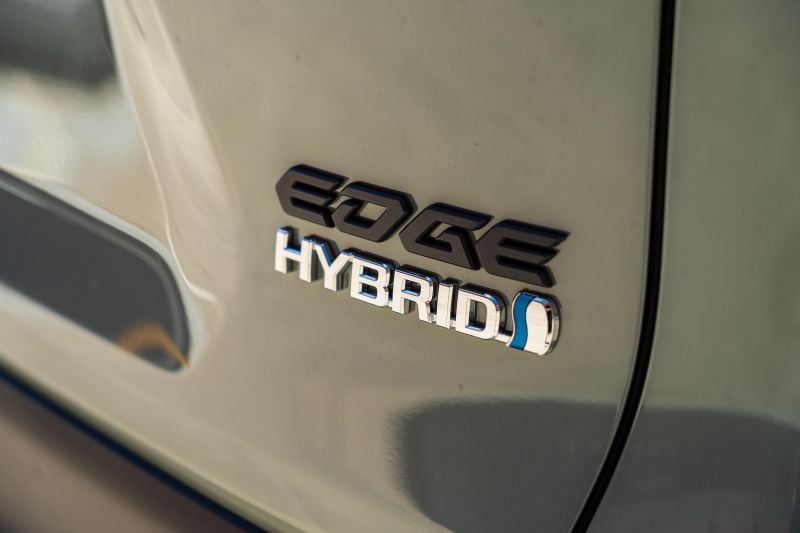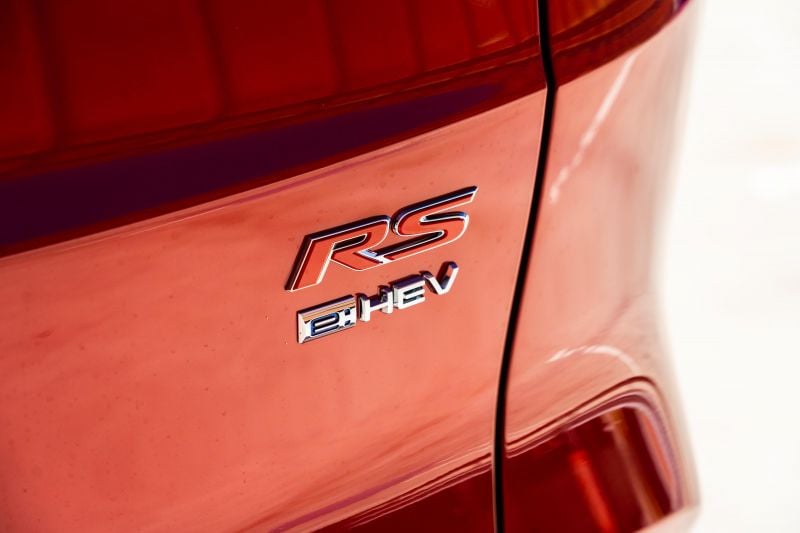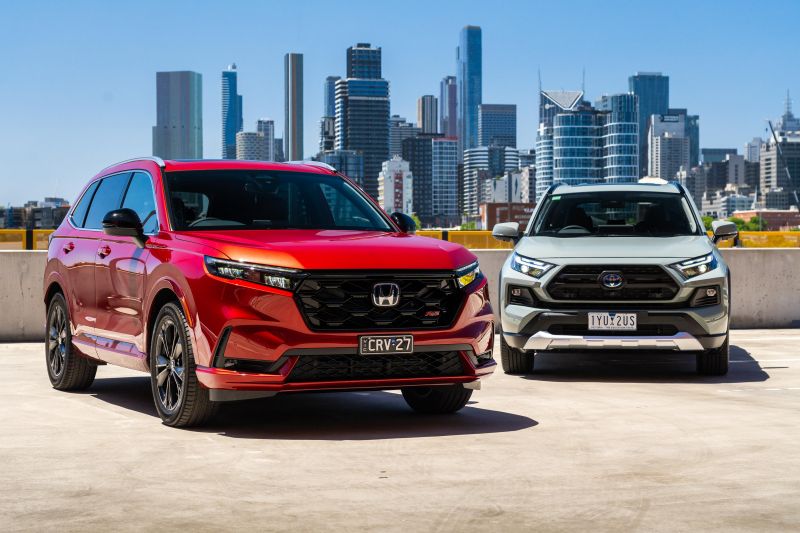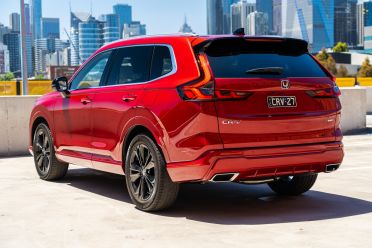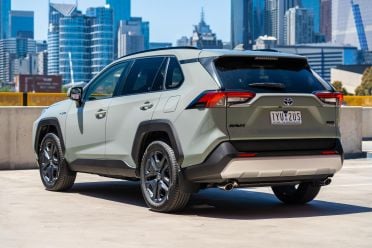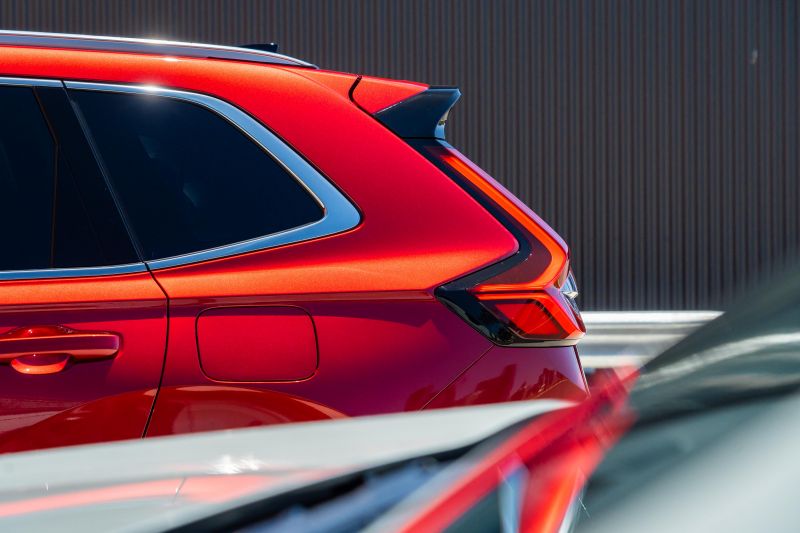Toyota is synonymous with hybrids, but it isn’t the only brand that’s been developing the technology since before 2000.
Honda launched the Insight in lockstep with the first-generation Toyota Prius, and has been a proponent for hybrid technology since that point… at least, it has been overseas.
In Australia we very received hybrid versions of the Jazz and Civic, while the second-generation Insight also swung by local showrooms, but otherwise Honda has left Toyota to dominate the market in Australia.
That’s changing. The Corolla and Camry hybrids now have some competition from the Civic e:HEV, and the rampantly popular RAV4 Hybrid now faces off with the CR-V e:HEV we have on test here.
The RAV4 Hybrid is so popular Toyota is still battling with crazy waiting lists in Australia. Is the hybrid CR-V the alternative Australia has been waiting for?
How much?
The 2024 Toyota RAV4 Edge AWD Hybrid is priced from $58,360 before on-road costs, equivalent to around $61,500 drive-away.
It’s the most expensive member of the RAV4 range, but it isn’t the only hybrid. Toyota is unique in offering hybrid power across its line-up, the cheapest of which is the GX 2WD Hybrid (~$46,000 drive-away).
Honda has taken a different approach with the CR-V, offering hybrid power only in tandem with the range-topping RS trim. It’s priced from $59,900 drive-away; Honda doesn’t do recommended list prices and instead has fixed drive-away pricing around Australia.
What do you get?
RAV4 Edge AWD Hybrid highlights:
Exterior
- Automatic projector LED headlights
- Auto high-beam
- LED fog lights
- Rain-sensing wipers
- Roof rails
- Rear privacy glass
- Heated, power-folding exterior mirrors
- 19-inch machine-faced alloy wheels
Interior
- 12.3-inch digital instrument cluster
- 10.5-inch infotainment display
- Satellite navigation
- Toyota Connected Services
- Wireless Apple CarPlay, Android Auto
- DAB+ radio
- Surround-view camera
- Digital rear-view mirror
- Wireless phone charger
- 9-speaker JBL sound system
- Heated and ventilated front seats
- 10-way power adjustment with lumbar support (driver)
- 8-way power passenger seat
- 60/40 split-fold rear seats and centre armrest
- Dual-zone climate control
- 2x front and 2x rear cup holders
- 3x front and 2x rear USB ports
- Keyless entry and start
- Space saver spare tyre
- Power tailgate
- Power sunroof
CR-V RS e:HEV highlights:
Exterior
- Automatic projector LED headlights
- Auto high-beam
- Active cornering lights
- LED fog lights
- 19-inch dark alloy wheels
- Privacy glass
- Roof rails
- Power-folding exterior mirrors with auto-dip for reverse
Interior
- 10.2-inch digital driver display
- 9.0-inch touchscreen infotainment system
- Satellite navigation
- Apple CarPlay (wireless), Android Auto (wired)
- DAB+ radio
- Reversing camera
- Wireless phone charger
- Auto-dimming rear-view mirror
- 12-speaker Bose premium audio
- 2x front and 2x rear USB ports
- Dual-zone climate control
- Rear air vents
- Leather seat trim with contrast stitching
- Heated front seats
- 10-way power adjustment with lumbar support and memory (driver)
- 4-way power passenger seat
- Rain-sensing wipers
- Hands-free power tailgate
- Panoramic sunroof
Are they safe?
Toyota RAV4
The Toyota RAV4 wears a five-star ANCAP safety rating based on tests conducted by Euro NCAP in 2019.
It scored of 93 per cent for adult occupant protection, 89 per cent for child occupant protection, 85 per cent for vulnerable road user protection, and 83 per cent for safety assist.
The following safety features are standard across the range:
- Autonomous emergency braking (AEB)
- Pedestrian/daytime cyclist detection
- Intersection Turn Assist
- Adaptive cruise control
- Blind-spot monitoring
- Lane departure warning
- Lane Tracing Assist
- Rear cross-traffic alert
- Reversing camera
- Front, rear parking sensors
- Traffic sign recognition
- Trailer sway control
- Emergency Steering Assist
- Hill-start Assist Control
- 7 airbags incl. driver’s knee
A 360-degree camera is available on Cruiser and Edge models, while the Edge alone has active rear cross-traffic assist and low-speed reverse AEB.
Honda CR-V
The new Honda CR-V is yet to be tested by ANCAP and Euro NCAP.
The following safety features are standard across the range:
- 11 airbags
- Forward collision warning
- Collision mitigation braking system (AEB)
- Lane departure warning
- Lane keep assist
- Road Departure Mitigation System
- Adaptive cruise control
- Low Speed Follow
- Traffic Jam Assist
- Traffic sign recognition
- Auto high-beam
- Parking sensors front, rear
CR-V VTi X7 + VTi L add:
- Blind-spot monitoring
- Rear cross-traffic alert
CR-V e:HEV RS adds:
- LED active cornering lights
- Adaptive Driving Beam (headlights)
What are they like inside?
Toyota RAV4
The RAV4 is a quality item inside, with lots of thoughtful touches that make it feel a bit special.
Along with the orange flashes in this Edge model, things like the rubberised door pulls and climate controls play nicely into the rugged, soft-road promise of the exterior.
The fundamentals are excellent, too. The driver and passenger sit in generously padded leather seats, and everything you touch feels high quality – we’ve accused the Corolla Cross of feeling a bit bare-bones, but that’s not something you could accuse the bigger RAV4 of.
Toyota has also dramatically improved the technology. The new infotainment screen is a huge step forward from what was offered previously, and makes the 9.0-inch display in the Honda feel small. It’s also easy to use, with slick graphics and a wireless smartphone mirroring system that connects quickly and doesn’t drop out.
The digital instrument binnacle is clean and simple, with more customisation options than you get in the Honda, although it’s still not a patch on what you get in the latest Volkswagen Group products.
Storage up front is good. There are two cupholders, along with a wireless phone charger beneath the dashboard that is shaped to keep your phone in place. The underarm bin is deep, and the door pockets have space for big bottles.
A single USB-A port is on hand for anyone who wants to phone mirror with a cable, with two USB-C ports hidden away up front for fast charging. There are two more USB-C ports in the rear.
The rear seats in the RAV4 are among the best in class, although they’re not quite as versatile as those in the CR-V. The rear doors also don’t open quite as wide as the 90-degree units in the Honda, making it slightly harder to load in bulky items like a child seat.
Legroom behind taller drivers is good, and there’s plenty of headroom thanks to the upright profile. As is the case in the Honda, there are rear air vents and a fold-down central armrest back there. ISOFIX points feature on the outboard rear seats, and there’s a trio of top-tether points.
Boot space is a claimed 542 litres with the rear seats in place, and the rear bench folds 60:40 – but doesn’t slide like those in the Honda. Points to Toyota for putting a remote release for those folding seats in the boot.
Honda CR-V
The new CR-V is a much cleaner, simpler car inside than its overwrought predecessor.
It’s also generously equipped, and feels every bit the quality item the RAV4 does. It’s a bit more demure than the orange-flecked Toyota, although the red stitching on this RS model helps lift things inside.
The front seats are all-day comfortable, with lovely soft cushions and just enough bolstering. The view out of the tall windows is palatial, and all the ergonomics are excellent – everything you need to touch is within easy reach. Honda has also clearly put effort into making sure all the buttons and dials click and clack in satisfying ways, and it’s paid off.
The CR-V has a 9.0-inch display running in-house software, and it’s a massive leap forward. It’s modern to look at, with crisp graphics and simple, slick menus, although it’s not as big as the screen in the RAV4.
Apple CarPlay is wireless, and works every bit as well as the system in the Toyota… but Android users will need to plug in, which is disappointing. Also lacking in the Honda is a proper surround-view camera like the one in its rival.
Honda’s digital dials are similar to those in the Toyota, with a cleaner layout and near identical customisation options. Again, a Volkswagen Group digital cluster puts both in the shade.
Storage up front is slightly better than in the RAV4, with a slot behind the cupholders that’s perfect for keys, and more space beneath the dashboard for odds and ends. The wireless charger won’t quite hold your phone in place on twisting roads though, which is annoying if you’re relying on it.
The Honda also offers only one USB-C rapid charge port to go with its USB-A smartphone mirroring plug, rather than the two on offer up front in the RAV4.
Honda has always traded on practicality when it comes to the CR-V, and the new model builds on that reputation. Its rear doors open to 90 degrees, making it easier to load kids into the rear seats, and those seats themselves can be slid forward to free up more boot space, or backwards to offer more legroom.
With them in their rearmost position, there’s space for full-sized adults to sit behind full-sized adults with room to spare, and the upright roofline means there’s plenty of headroom – despite the panoramic sunroof in the CR-V RS, which makes the RAV’s look like a cat flap.
ISOFIX points feature on the outboard rear seats, and there’s a trio of top tether points. A fold-down central armrest and air vents are on hand, along with a pair of USB ports.
Boot space in the CR-V is 581 litres with the rear seats in place, and the rear bench folds 60/40. The lack of a remote seat fold-down mechanism in the boot is a loss.
What’s under the bonnet?
Toyota RAV4
Power in the Toyota RAV4 Edge AWD Hybrid comes from a 2.5-litre naturally-aspirated petrol engine mated with two electric motors (one integrated with the transmission, and another on the rear axle for all-wheel drive) and a nickel-metal hydride battery pack.
Peak power is 163kW, and Toyota doesn’t quote a peak torque figure.
Claimed fuel economy is 4.8 litres per 100km on the combined cycle, we saw 5.5 litres on a drive loop blending city with highway driving. The RAV4 drinks 91 RON regular unleaded, and has a 55-litre fuel tank.
Honda CR-V
Power in the Honda CR-V RS e:HEV comes from a 2.0-litre naturally-aspirated petrol engine mated with two electric motors and a lithium-ion battery pack.
Peak power is 135kW, and peak torque is 335Nm.
Claimed fuel economy is 5.5 litres per 100km, we saw 5.7 litres per 100km on a drive loop blending city with highway driving. The CR-V drinks 91 RON regular unleaded, and has a 57-litre fuel tank.
How do they drive?
Toyota RAV4
The RAV4 will feel instantly familiar to anyone who’s driven a Toyota hybrid.
It starts up in electric mode and generally leans on the e-motor between standstill and around 20km/h, at which point the petrol engine kicks in to keep you rolling. The handoff between electric and petrol power is more noticeable in the Toyota than the Honda, and the engine is more vocal at low speed.
With that said, it’s the more refined of the two when you really put your foot down. Where the Honda feels a bit strained when you force it to rev, the Toyota has a bit more muscle behind it.
That means it feels more confident accelerating uphill with family on board, or overtaking at highway speeds.
Part of the RAV4’s enduring appeal is how easy it is to live with in the city. Its steering is light and direct, and the slightly elevated driving position relative to the CR-V makes it feel even easier to place in tight spaces.
Ride quality is slightly better in the RAV4 than its rival, better isolating occupants from sharp bumps in the city.
It’s a relaxed cruiser at highway speeds, too. Insulation from the outside world is excellent, and the petrol engine hums away quietly in the background at a cruise. It won’t flick into EV mode as often as the Honda, but down hill or when you’re coasting down to a lower speed limit the engine does turn off to save fuel.
Australia is a small market in the context of Toyota’s global empire, but Toyota is a big player here. Its experience shows on coarse-chip highways, where the RAV4 does a better job muting tyre roar.
Toyota’s driver assists are less prone to inane beeping than before, and the adaptive cruise control does a good job maintaining a gap to the car in front.
The lane-keeping assist stays hands off for the most part, only intervening if you stray towards the white lines, but the lane-centring system is a bit too grabby for my liking.
We’ve heaped praise on the latest TNGA-underpinned Toyota products for feeling more engaging if you actually enjoy driving, and the RAV4 remains a pretty nice SUV to hustle along.
It’s just not quite as nice as the CR-V, which is a real over-achiever in that department.
Honda CR-V
Honda’s hybrid system is a bit different to Toyota’s, although ultimately it delivers similar economy.
Like the setup in the RAV4, it leans predominately on the electric motor at low speeds for smooth, silent progress in traffic. But unlike the Toyota, it will continue leaning on that electric motor above around 30km/h provided you’re not in too much of a hurry.
You rarely hear the petrol engine in normal driving, even though it hums away in the background to keep the battery charged or offer more performance when you want to accelerate in a hurry.
Really put your foot down though, and you’re made aware of the 2.0-litre engine under the bonnet. It gets noisy when you flatten your foot, or if you’re trying to accelerate with a carload of people up a hill at highway speeds. It’s the only real chink in the hybrid system’s armour, but it’s also one that doesn’t often rear its head.
With light steering and excellent all-round visibility, the CR-V is easy to drive in the city. The wheels on this RS are bigger than those on the base model, but the ride is generally good on pockmarked city streets.
It floats nicely over little lumps and bumps, although sharp hits from potholes rattle through the cabin harder than in the cheaper CR-V with its smaller wheels and chubbier tyres. It’s not quite as comfortable as the RAV4, although it’s not all that far off – and the sportiness pays off if you enjoy driving.
On the highway, the CR-V is impressively settled. It’s whisper quiet on smooth tarmac, and the ride is excellent over big highway crests and dips. It just soaks them up in one swift movement, with more composure than the RAV4.
It’s a shame that coarse-chip highways can elicit more tyre roar than is ideal at 100km/h, and the engine gets noisy when you wind it up for overtakes on single-lane country highways.
Honda’s driver assists are smartly tuned. The adaptive cruise control neatly maintains a gap to the car in front, and the active lane-centring system is smooth when it does decide to nudge you back into line.
Moving away from the old LaneWatch camera system and fitting a blind-spot monitoring light is a step forward as well. They’re slightly less intrusive than Toyota’s systems, with fewer rogue beeps.
The team behind the CR-V clearly wasn’t smoking the same stuff as the Civic Type R team, but they spent enough time around them to develop a secondhand high.
It handles better than the RAV4 when you’re in a hurry, with lovely steering and significantly better body control than the Toyota. Tip it into a corner and it feels like an overgrown Civic; it’s really good fun.
Cost of ownership
Toyota RAV4
Toyota Australia covers its range with a five-year, unlimited-kilometre warranty.
All engine variants cost $260 per service for the first five visits under the capped-price servicing program. Intervals are 12 months or 15,000km – whichever comes first.
Honda CR-V
Honda Australia covers its range with a five-year, unlimited-kilometre warranty.
Honda is currently capping scheduled maintenance at $199 per visit for the first five scheduled services for new models. Intervals are 12 months or 10,000 kilometres – whichever comes first.
CarExpert’s Pick
Why bother putting the CR-V up against a RAV4 you can’t currently buy – at least, not without waiting a seriously long time?
Well, you’ve gotta beat the best to be the best. And that’s exactly what Honda has done here.
It’s not quite as efficient as the RAV4, but the hybrid system in the CR-V is every bit as refined. The Honda also packs a more spacious, flexible interior, and is more fun to drive when the road gets interesting.
Throw in the fact it’s slightly cheaper than the RAV4 Edge on test here, and you’ve got a winner.
That’s not to say it’s a winner by much; the Toyota is a runaway sales success for a reason. It remains a super practical, versatile, and efficient family SUV. It’s no surprise the waits are so long.
Although we’ve found out it’s not what you’d call capable off-road, the fact the Edge is all-wheel drive makes it a more versatile option for anyone who likes heading to the snow or down fire trails, and it’s disappointing Honda only offers one CR-V variant.
Like-for-like, the CR-V is a more appealing SUV than the RAV4. But if you don’t have $60k to spend, only the RAV4 has a trim level to look after you.
Click the images for the full gallery
BUY: Honda CR-V
BUY: Toyota RAV4
MORE: Everything Honda CR-V
MORE: Everything Toyota RAV4




